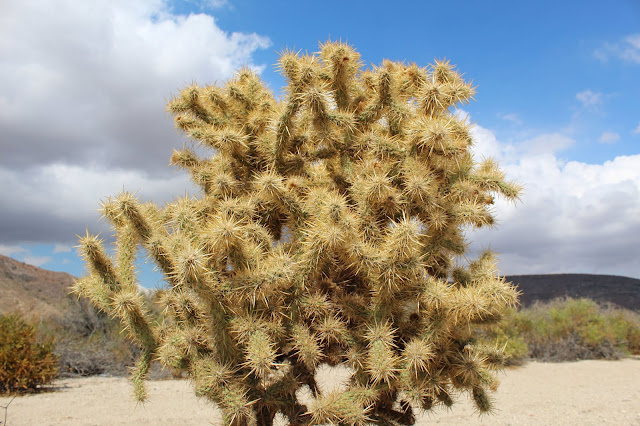Cylindropuntia Echinocarpa has several common names, including Silver cholla and Gold Cholla. This duality can be confusing for both casual and experienced beholders.
Newly growing spines on C. Echinocarpa resemble small, silvery, needle like protrusions. As they develop, golden tipped sheath like epidermal coverings enclose the spikes. This growth habit results in a sometimes gold, other times silver, but always pointy looking plant. Their spines are strong and sharp enough to penetrate tough material, and are also covered in microscopic barbs which can make removal difficult. They are numerous, of different length, and heavily obscure the gray green stems beneath.
Silver Cholla is native to the Pioneertown area, and has a widespread endemic range throughout the Mojave Desert. It may be the most abundant cactus from Yucca Valley through 29 Palms and portions of Joshua Tree National Park. Near cities, other species of Cylindropuntia are cultivated, and in rural environments, natural hybrids occur where native Cholla ranges overlap. The most effective way to discearn Silver Cholla from both is to find specimens in bloom, with flashy green inflorescences. Other diagnostic criteria include growth habits, with a short trunk, densely branched from the base, and short terminal branches growing from longer ones. They reach up to 4 feet tall on average, with some exceptional specimens over 6 feet. The fruits are dry and spiny, and few remain on the plant after achieving maturity.
Silver swords with golden tips, branding kiss from rivers lips, into sand their outstretched hand, spines and segments root to land.




No comments:
Post a Comment